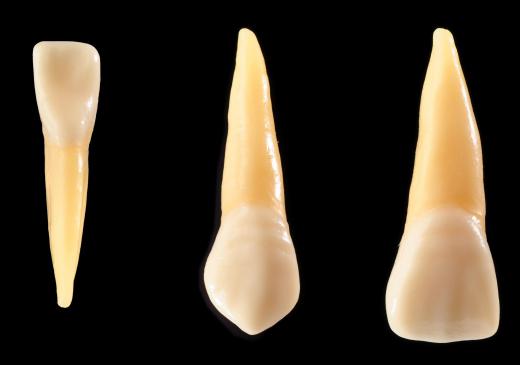What is Demineralization?
Demineralization is the removal of minerals, especially mineral salts, from a liquid, usually water. The term is also applied to the process of removing of minerals or mineral salts from living tissue, especially bone. Demineralization of tissue is usually a result of a serious medical condition or disease.
When referring to the removal of minerals or salts from water, demineralization most often involves the process desalinization. Any process that removes minerals or mineral salts from any liquid is technically demineralization, however. Cooks may actually perform demineralization on a soup or stock by adding whole potatoes to a boiling liquid. The potatoes absorb salt from the liquid.

Water softeners are devices which remove certain minerals from water, like calcium and magnesium. They perform this function by replacing the calcium and magnesium atoms with ions of sodium with the help of a catalyst. This is not strictly demineralization, although is sometimes called such. Other processes involving the use of ions to remove minerals from water can produce nearly pure water with no dissolved minerals. Water treatment plants often use this process to remove harmful minerals from water.

Desalinization is by far the most common and most important type of demineralization process. This process is used to remove salt from water, usually sea water. The result is fresh water, which can be used for drinking, raising crops, or any other use for which salt water is unsuitable. This process is often employed by seagoing ships to continually provide a source of fresh water. Countries with a lack of fresh water supplies use massive desalinization plants to produce millions of gallons of fresh water from sea water.

When used to describe the loss of minerals from living tissue like bone or tooth enamel, demineralization is usually the result of a serious condition or disease. Osteoporosis is the most common cause of demineralization in human tissues and causes bones to gradually lose the minerals that make up a major part of their structure. Calcium, phosphorous and other minerals are slowly depleted from bones, making them brittle and weak.

Tooth enamel is also sometimes affected by mineral loss. This is usually due to exposure to very acidic foods or liquids or the action of oral bacteria that produce acids. Certain diseases also can cause the loss or degradation of tooth enamel. This loss of the chief mineral in tooth enamel, hydroxyapatite, rarely significantly reduces the strength of the enamel, but rather makes it less able to protect the sensitive tissue and nerves beneath, which can make teeth very sensitive to hot or cold foods or liquids.
AS FEATURED ON:
AS FEATURED ON:

















Discussion Comments
@ Bronze Eagle
The article just mentions demineralization of water...honestly, it wouldn't surprise me. It says water treatment plants remove harmful minerals in this manner. I know calcium buildup is no fun to clean.
It is weird. Totally agree. The article mentions osteoporosis being caused by the demineralization of bone over time, citing phosphorous and calcium loss as a cause, which I think is pretty well common knowledge, but is calcium actually removed from drinking water?
OK, seriously...why is water calcium and magnesium removed from water? Then people take expensive supplements to get basic minerals that their body is lacking? Am I the only who finds this weird?
Post your comments